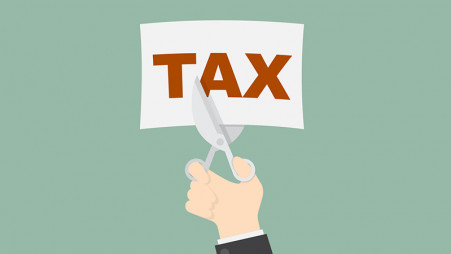Govt plans to scrap reduced tax benefits for textile sector

Highlights
- Govt plans to end 15% reduced tax for textile sector
- Textiles to face regular 27.5% corporate tax
- Listed companies to get lower tax rate
- 2% advance income tax may apply on cotton imports
- Decision expected to be implemented in next budget
- Govt aims to phase out tax exemptions, boost revenue
The government plans to scrap the benefits of a reduced 15% tax rate for textile entrepreneurs in the upcoming fiscal year as part of moving away from tax exemptions, according to officials at the National Board of Revenue (NBR).
In the next budget, the sector is expected to face the regular corporate tax rate of 27.5%. However, companies listed on the stock market will enjoy a relatively lower rate of 22.5%, the officials said.
Additionally, a 2% advance income tax (AIT) may be imposed on the import of key raw materials such as cotton and man-made fibres.
Entrepreneurs say the textile sector is already struggling due to the ongoing gas and electricity shortages, and that a higher tax rate will only exacerbate their difficulties.
"With the surge in costs over the past two years, profitability in the sector has dropped significantly. In such a situation, if taxes are increased, it will be difficult for many businesses to survive," said Saleudh Zaman Khan, vice president of the Bangladesh Textile Mills Association (BTMA).
A senior NBR official, involved in budget formulation, told TBS on condition of anonymity, "The reduced tax rate benefit for the textile sector is set to expire on 30 June this year. There are no plans to extend this facility, meaning companies in this sector will have to pay the regular tax rate going forward."
He said the government is taking this step as part of its move to phase out tax exemptions and boost revenue collection.
However, the existing reduced tax rate for readymade garment exporters – currently capped at 12% – may remain in place for another two years, he added.
The official explained that since these companies are entitled to benefits under the sunset clause until 2028, there is little scope to withdraw the facility before then.
According to Saleudh Zaman, textile mills have an annual turnover of over $20 billion from both exports and the domestic market, with the local market accounting for only around $1 billion.
He noted that textile mills pay 1% source tax on annual turnover for yarn and fabric in case of exports, while sales in the domestic market face a 4% source tax.
According to industry insiders, many textile mills are either operating at a loss or just breaking even under current conditions. Even the few that are profitable report an average profit margin of no more than 3%.
"If the profit margin is 3% and we are paying 1% source tax on turnover, that means our effective tax rate is 33%, even though it is officially 15%," the BTMA vice president told TBS.
"Now, if an additional 2% AIT is imposed on cotton imports, and even if we are allowed to adjust the 1% source tax, our tax burden would still double," Saleudh Zaman said. "In that case, our effective tax rate would shoot up to 66%."
Dr Syed Md Aminul Karim, former member of the NBR, told TBS, "For years, the government has allowed the textile and garment sectors to pay taxes at reduced rates. But now, it's time to gradually shift them to regular tax rates.
"But the government should introduce a mechanism where taxes are based on a company's actual profitability – no profit, no tax; higher profits, higher taxes."
According to the BTMA, there are 1,854 textile mills that are members of the association, of which 58 are listed on the stock market. Currently, approximately $22 billion has been invested in this sector.



 Keep updated, follow The Business Standard's Google news channel
Keep updated, follow The Business Standard's Google news channel















